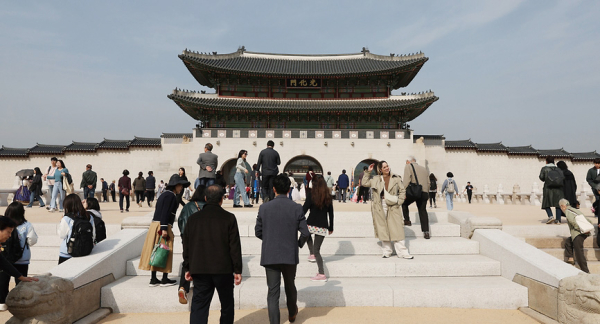
In Oct. 2024, the long-lost Woldae, an elevated platform in front of Gwanghwamun at Gyeongbokgung Palace, was restored to its original location, drawing significant attention. The Woldae, built in 1866 during the reign of Heungseon Daewongun, was a symbol of the grandeur of Gyeongbokgung and the king’s connection with his people. After being damaged during the Japanese colonial period, the platform had been absent for decades, but its recent reconstruction reignites important discussions about its historical and symbolic significance.
The idea of constructing the Woldae dates back to the reign of King Sejong in the early Joseon Dynasty. However, Sejong rejected the proposal, citing the agricultural season and concerns over using forced labor. In contrast, Heungseon Daewongun moved forward with the project in the late Joseon period, justifying it as a way to enhance communication with the people. While both kings seemingly had the welfare of the people in mind, their intentions diverged. Sejong’s decision reflected genuine concern for the people, whereas Daewongun’s motivations are often seen as focused on reinforcing royal authority.
The Woldae was destroyed during the Japanese colonial era when a tram line was installed in front of Gwanghwamun. Its recent restoration has been largely justified by the claim that it was eliminated by colonial forces. While the rebuilt Woldae offers a clearer, unobstructed view of Gwanghwamun, some critics argue that more attention should have been paid to the true symbolic meaning and historical reasoning behind the structure before its restoration. The reasons behind Sejong’s rejection of the Woldae should also be reconsidered in light of the recent restoration.
Meanwhile, the nameboard above Gwanghwamun has also undergone multiple transformations over the years. As of 2025, the name board features gold lettering on a black background, closely following the historical description in <Gyeongbokgung Yeonggeon Ilgi (Daily Record of the Construction of Gyeongbokgung Palace)>, which mentions the traditional color scheme of “black base with gold characters.” This version, restored in 2023, reflects the belief that the combination of black and gold symbolizes the control of fire and royal dignity.
Previously in 2010, the nameboard displayed black letters on a white background, based on a 1902 photograph housed at the University of Tokyo, which showed a lighter background. However, following historical records, the nameboard was restored to its current form in 2023. Another notable change has been the shift between Chinese characters and Hangul on the sign. Currently, the nameboard uses Chinese characters for historical accuracy, though during the presidency of Park Chung-hee, the inscription was changed to Hangul to emphasize national identity.
These transformations of the Woldae and the nameboard highlight the ongoing debate surrounding cultural restoration. Experts argue that it is not enough to simply rebuild historical structures; the motives behind these changes and the cultural context in which they occur must also be carefully considered. The restoration of these historical elements continues to spark discussions on history, national identity, and the balance between preserving authenticity and adapting to modern values.


